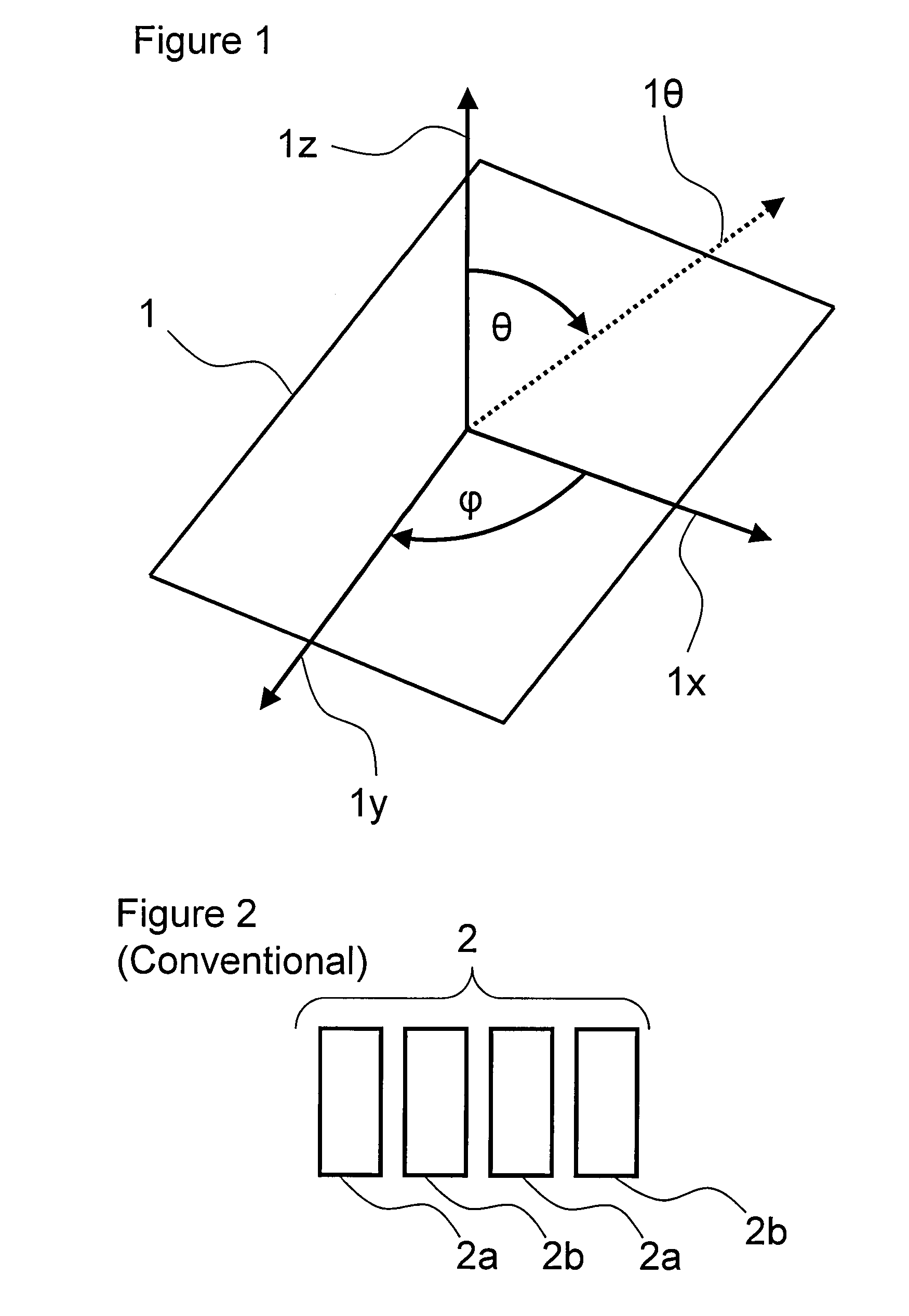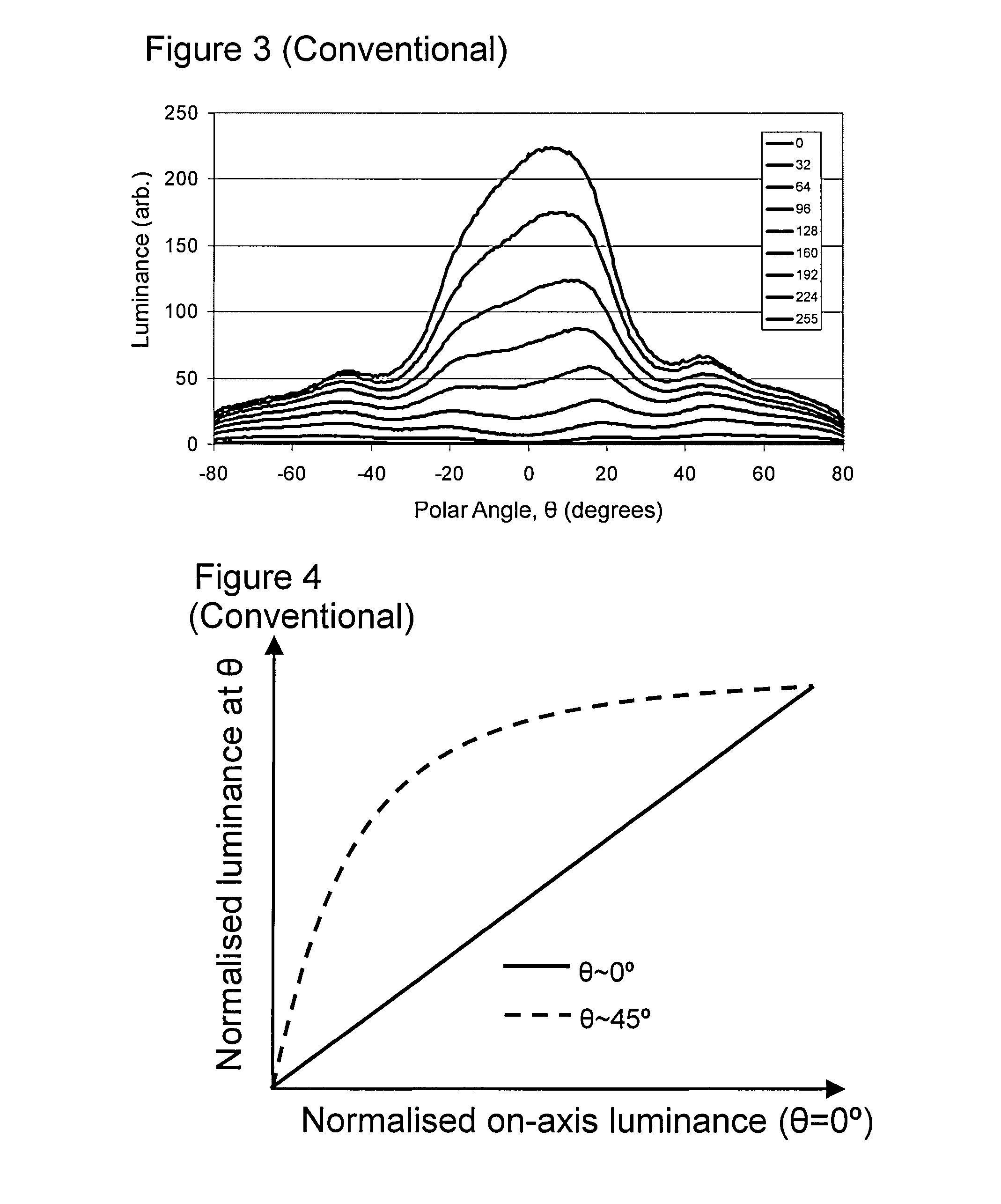Angular dependent pixels for trick view
a technology of trick view and angular dependence, which is applied in the field of display devices with electronically switchable privacy functions, can solve the problems of inefficient display in light use, and inability to control the brightness of the display film, so as to achieve a stronger privacy function and reduce colour variation
- Summary
- Abstract
- Description
- Claims
- Application Information
AI Technical Summary
Benefits of technology
Problems solved by technology
Method used
Image
Examples
first embodiment
[0083]the invention relates to the use of additional optics in conjunction with the image processing technique as described in GB2428152A1, to enhance the privacy strength of a display device 1. In order to implement the image processing technique, the display controller electronics may be substantially as those described above for the switchable privacy display of GB2457106A. The display controller electronics may use the spatial “flag” parameter to denote which of the two or more pixel types of the display with differing luminance against viewing angle response is being addressed, rather than to denote which of two or more groups the pixel is deemed to be in based on solely on its spatial position. The display controller electronics may use the spatial “flag” parameter as described in GB2457106A and a secondary “flag” parameter to denote which of the two or more pixel types of the display with differing luminance against viewing angle response is being addressed. In this case, the...
second embodiment
[0095]Some display devices, such as IPS LCD and OLED, have a luminance-data response that is not intrinsically compatible with the image processing technique described in GB2428152A1 and hence a private narrow view mode can't be realised for these display devices using the image processing technique described in GB2428152A1. the invention relates to the use of additional optics with display types that are not intrinsically compatible with the image processing technique as described in GB2428152A1 so that a switchable privacy function can be realised for the display types.
[0096]The plot in FIG. 13 illustrates a typical Normalised luminance at θ against Normalised on-axis luminance of a single pixel in either an in-plane switching (IPS) LCD or an OLED. Contrary to FIG. 4, the plot in FIG. 13 illustrates that there is very little intrinsic difference between the on-axis normalised luminance and off-axis normalised luminance response for the display types. For any normalized on-axis lum...
third embodiment
[0097]the invention relates to the use of additional of optics in conjunction with the image processing technique as described in GB2428152A1 to create a display device capable of a Normal Mode; an autostereoscopic 3D mode; a private narrow view mode for 2D images and text; and, a private narrow view mode for autostereoscopic 3D images (i.e. a mode for private viewing of 3D images).
[0098]With reference to FIG. 14, a display with the capability to show autostereoscopic 3D images can be achieved with parallax optic 4 comprised entirely of a lens array. The parallax optic is centered symmetrically about Pixel 5a and Pixel 5b (pixels 5a and 5b forming a group 5c). Pixel 5a and Pixel 5b may be white pixels within a display. Pixel 5a and Pixel 5b may be colour sub-pixels within a display. This type of autostereoscopic 3D display has previously been disclosed and is therefore well known to those skilled in the art of autostereoscopic 3D display manufacture. Consequently, a brief descriptio...
PUM
 Login to View More
Login to View More Abstract
Description
Claims
Application Information
 Login to View More
Login to View More - R&D
- Intellectual Property
- Life Sciences
- Materials
- Tech Scout
- Unparalleled Data Quality
- Higher Quality Content
- 60% Fewer Hallucinations
Browse by: Latest US Patents, China's latest patents, Technical Efficacy Thesaurus, Application Domain, Technology Topic, Popular Technical Reports.
© 2025 PatSnap. All rights reserved.Legal|Privacy policy|Modern Slavery Act Transparency Statement|Sitemap|About US| Contact US: help@patsnap.com



